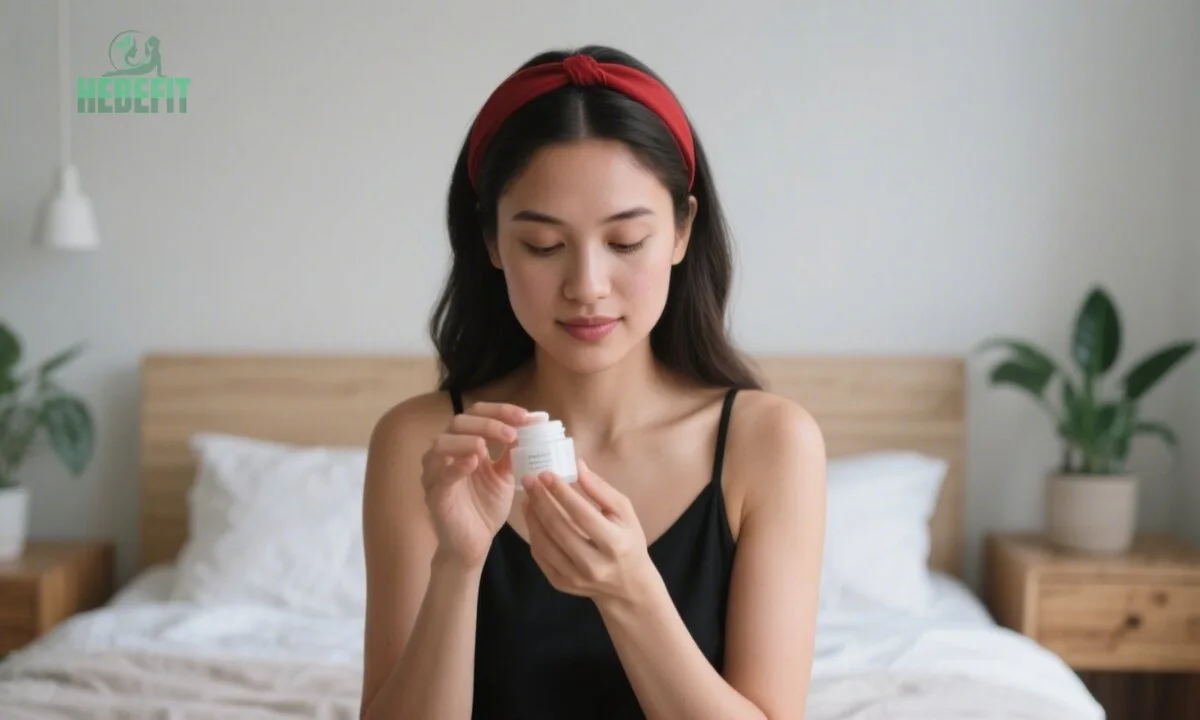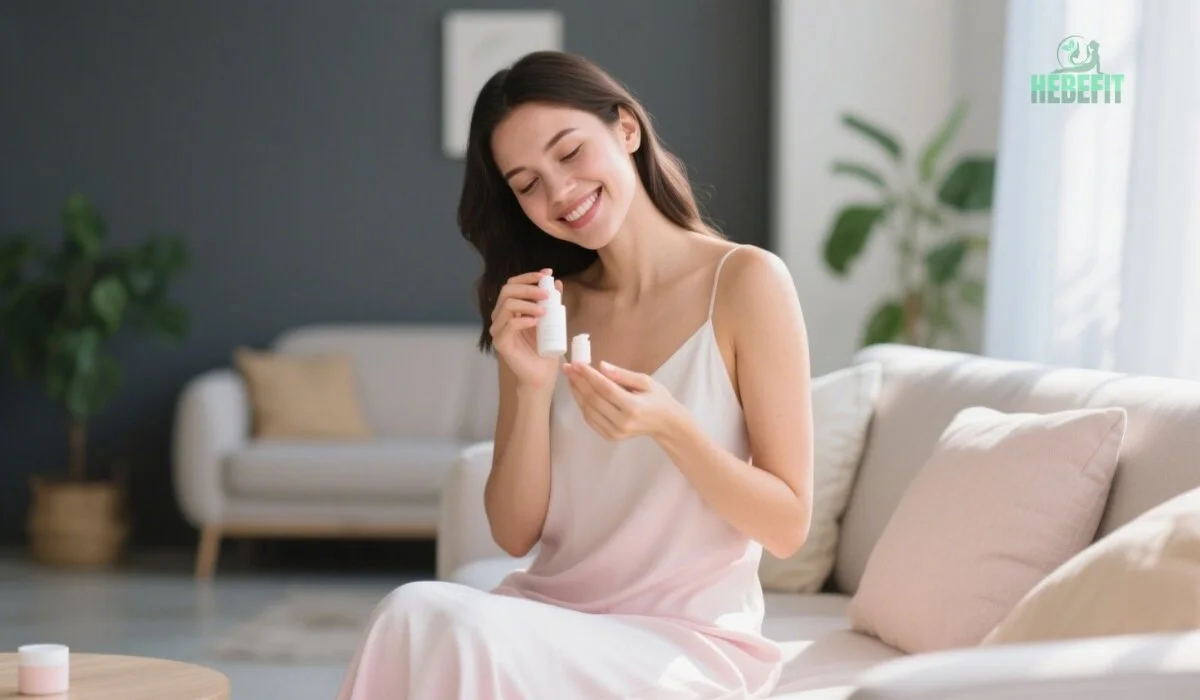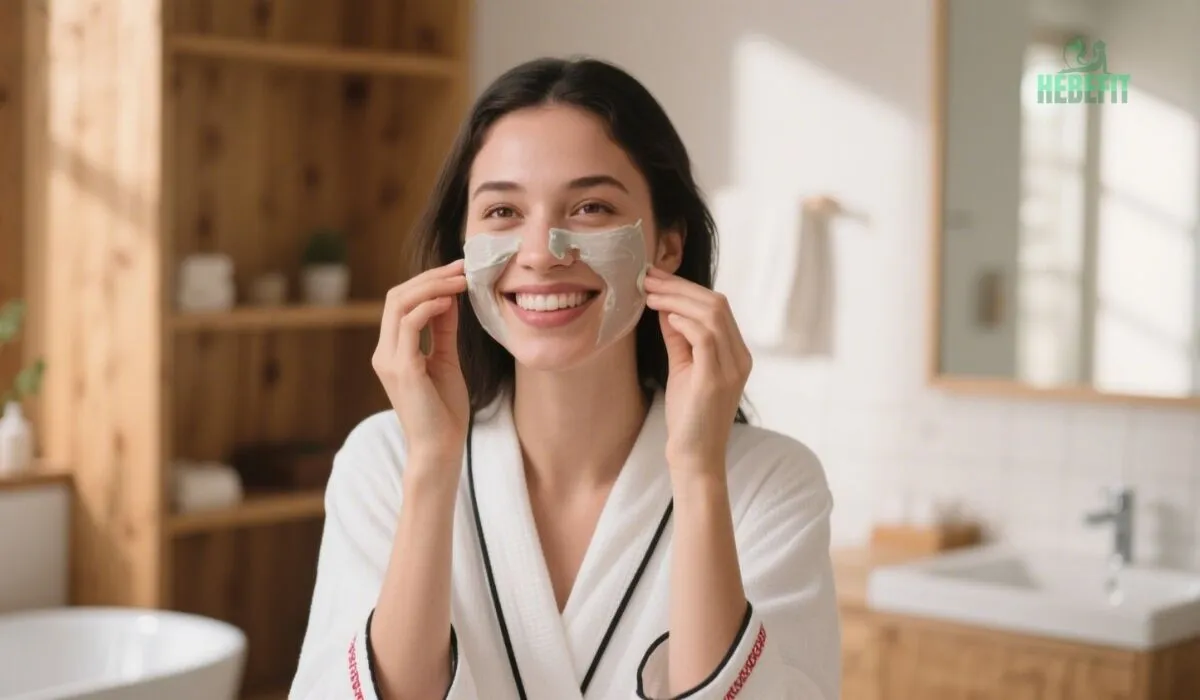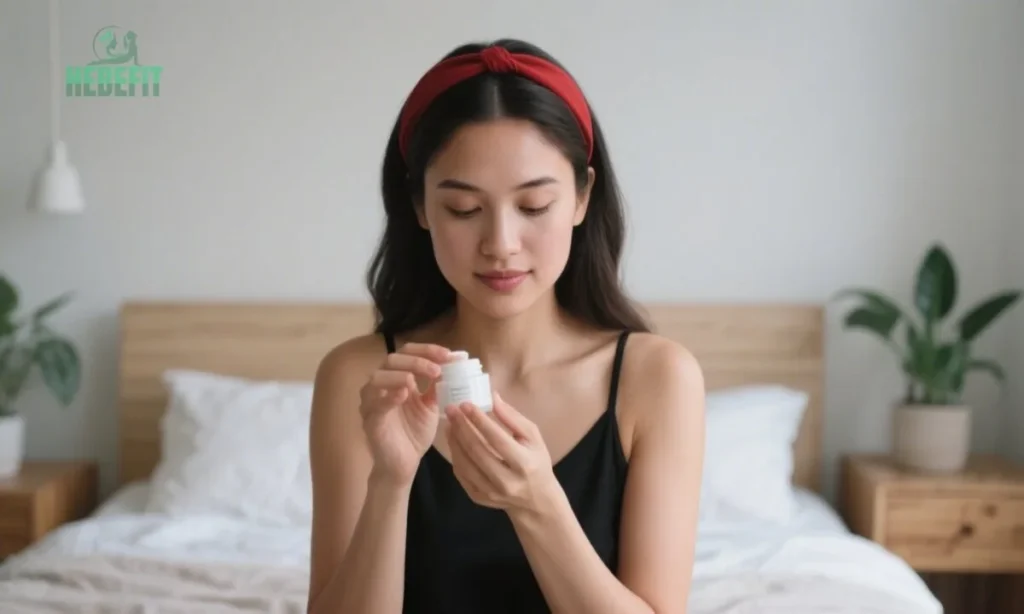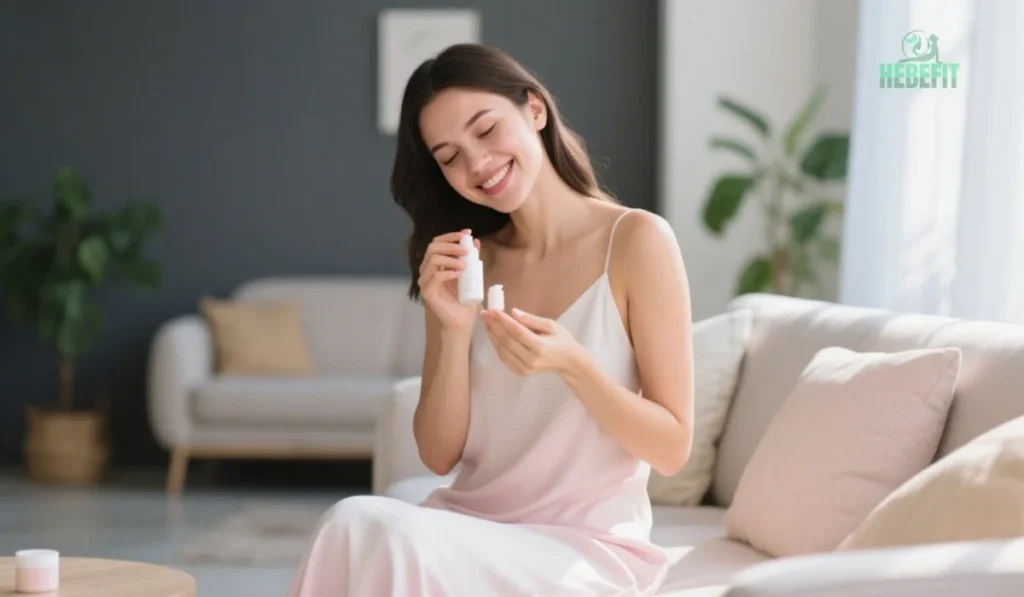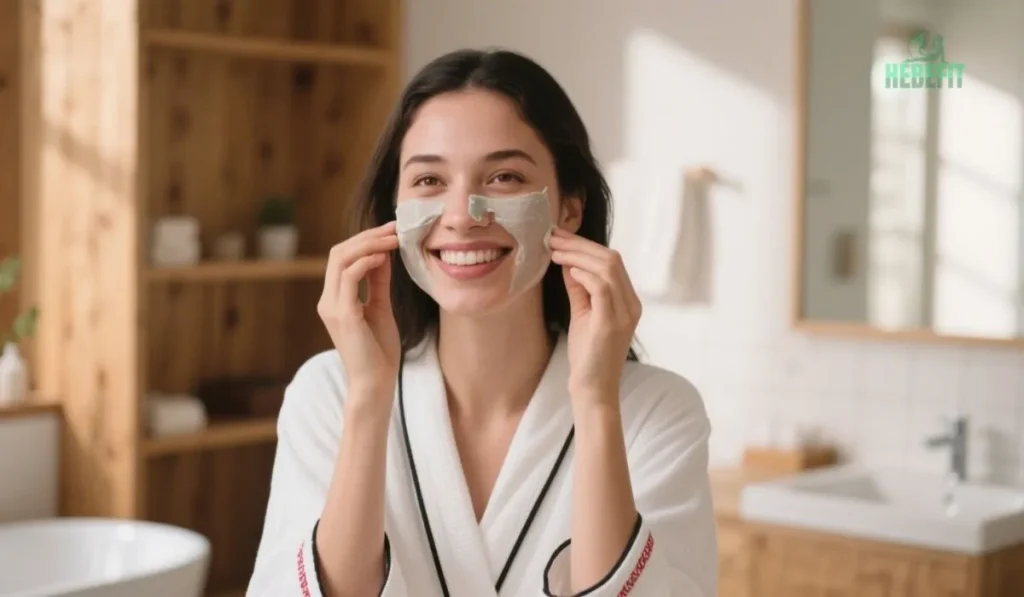Best Moisturizer for oily skin is essential for keeping your face hydrated without adding extra shine. Finding the right one can be tough, but it’s key to maintaining healthy skin. The right formula balances moisture and oil control helping reduce sebum, prevent acne and leave your skin feeling smooth and refreshed.
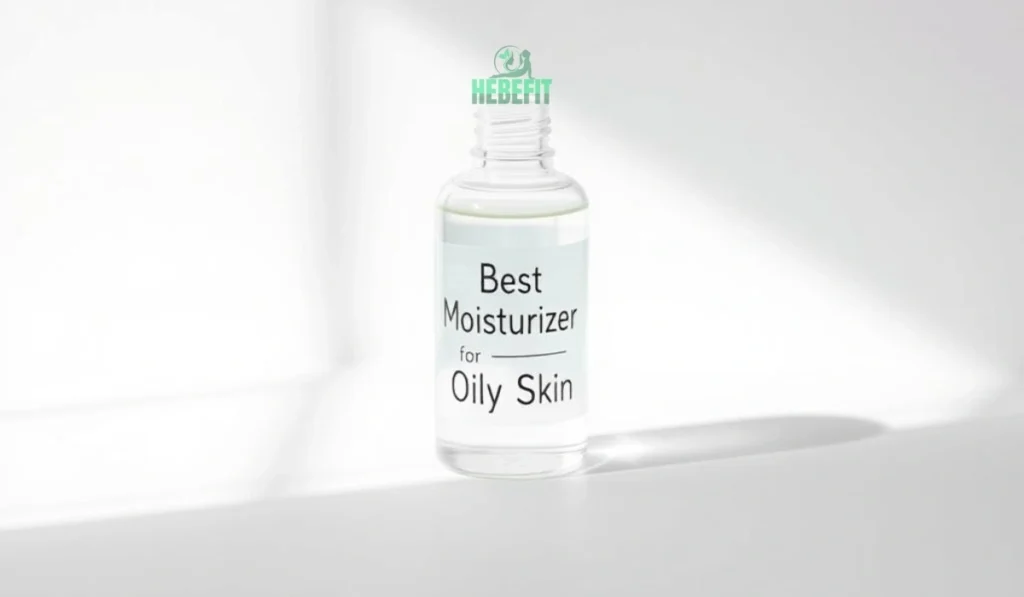
With so many products out there, it’s easy to get lost. That’s why we’ve made this detailed guide. It’s here to help you find the top moisturizer for oily skin that’s just right for you.
Key Takeaways
- Understand the importance of moisturizing oily skin
- Learn how to choose the right moisturizer for your skin type
- Discover the benefits of oil-free hydration
- Explore the top moisturizers for oily skin
- Get tips on how to apply moisturizer for maximum effectiveness
Understanding Oily Skin and Its Hydration Needs
Managing oily skin starts with knowing why it happens. It’s about too much sebum, which can block pores and cause acne. But, how much water the skin needs is just as important for its health.
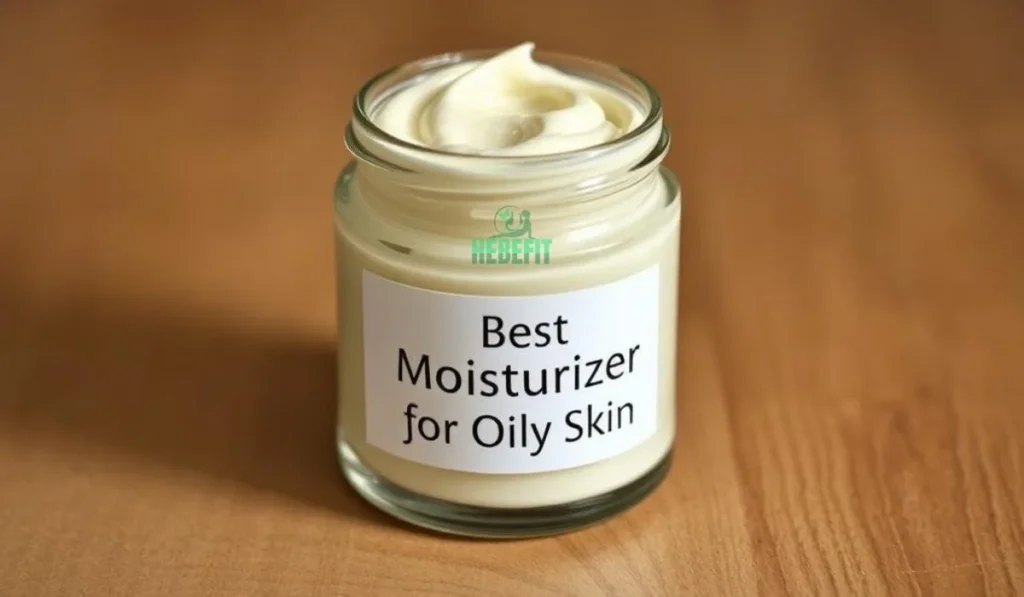
What Causes Excess Oil Production
Too much oil comes from genes, hormones, and the environment. Hormonal changes like puberty or menopause make glands work harder. Stress and some medicines also increase oil.
Using the wrong products or washing too much can take away natural oils. This makes the skin produce more oil to make up for it.
Common Misconceptions About Moisturizing Oily Skin
Many think oily skin doesn’t need moisturizer. But, not moisturizing can make the skin dry and produce more oil. Not all moisturizers are the same; oil-free and non-comedogenic ones are best for oily skin.
Choosing the right oil-control moisturizer is key. It should be labeled “non-comedogenic” or “oil-free” to prevent clogged pores.
Why Oily Skin Still Needs Moisturizer
Many think oily skin doesn’t need moisturizer. But, this is a common skincare myth. Moisturizer is actually key to keeping skin healthy.
Oily skin makes too much sebum. Yet, it still needs water to stay healthy. Hydration and oil production are different. Knowing this shows why moisturizer is important.
The Difference Between Oil and Hydration
Oil and hydration are not the same in skin care. Oil comes from the skin’s glands. Hydration is about the skin’s water level.
Dehydrated skin makes more oil to protect itself. This can make oiliness worse and clog pores.
- Dehydration makes skin produce more oil.
- Moisturizers keep skin hydrated.
- Hydrated skin doesn’t overproduce oil.
How Skipping Moisturizer Can Worsen Oiliness
Not using moisturizer can harm oily skin. It can get dry, irritated, and inflamed. This leads to more oil.
Also, the wrong products or no moisturizer can take away natural oils. This makes the skin produce even more sebum.
A lightweight, oil-free moisturizer keeps skin hydrated without clogging pores. Choose products labeled “non-comedogenic” or “oil-free” to avoid making oiliness worse.
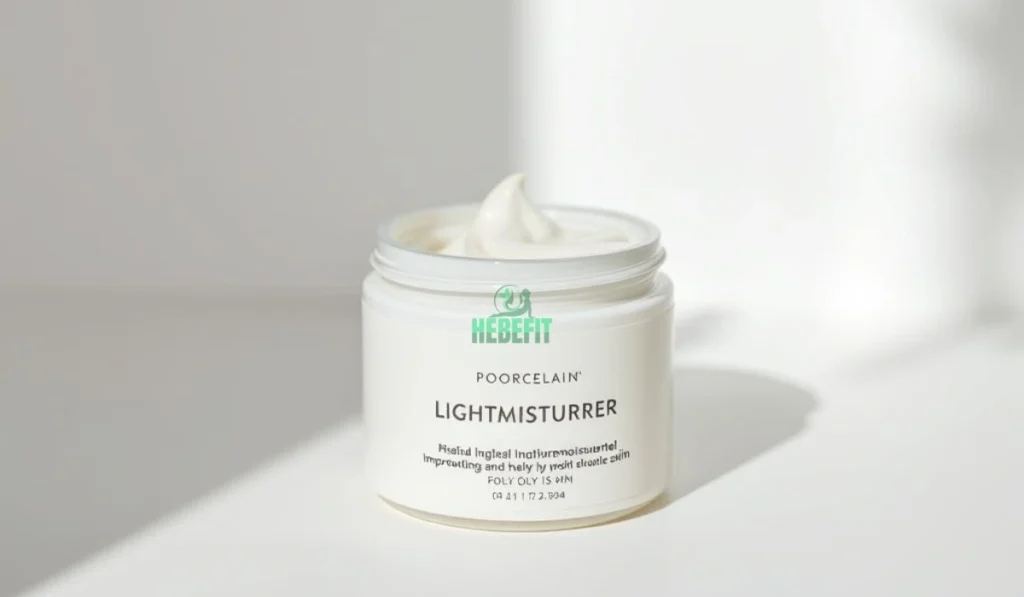
Key Ingredients to Look for in the Best Moisturizer for Oily Skin
Looking for the best moisturizer for oily skin means knowing the key ingredients. These ingredients should hydrate without making your skin oilier. The right moisturizer balances hydration and oil control for oily skin.
Hyaluronic Acid and Glycerin: Hydration Without Heaviness
Hyaluronic acid and glycerin are great for hydrating without feeling heavy. Hyaluronic acid can hold a lot of water, making it perfect for keeping skin moist. Glycerin also draws in moisture, keeping your skin hydrated.
Together, they help keep your skin’s moisture barrier strong. They do this without clogging pores or adding extra oil.
Niacinamide and Salicylic Acid: Oil Control Champions
Niacinamide and salicylic acid are top choices for controlling oil. Niacinamide helps manage sebum, improves skin elasticity, and strengthens the skin’s barrier. Salicylic acid gently exfoliates, unclogs pores, and reduces inflammation.
These ingredients work together to control oil and reduce pore appearance.
Antioxidants and Vitamins: Protection and Repair
Antioxidants and vitamins are key for protecting and repairing the skin. Antioxidants like vitamin C fight off free radicals, reducing stress and preventing aging. Vitamins E and A support the skin’s natural repair and make it more resilient.
Natural Ingredients That Balance Oil Production
Certain natural ingredients can balance oil and soothe oily skin. Green tea extract and aloe vera have anti-inflammatory effects, calming the skin. Tea tree oil fights acne-causing bacteria, helping manage oily skin.
Ingredients to Avoid in Moisturizers for Oily Skin
To keep oily skin hydrated without making it oilier, avoid certain moisturizer ingredients. The wrong ones can block pores, irritate the skin, and make it produce more oil.
Comedogenic Oils and Butters
Some oils and butters can clog pores and cause acne. Coconut oil, cocoa butter, and shea butter are examples. They are nourishing but too rich for oily skin. Choose non-comedogenic or oil-free options instead.
Heavy Fragrances and Potential Irritants
Heavy fragrances in moisturizers can irritate oily skin, causing inflammation and more oil. Fragrance-free or hypoallergenic moisturizers are safer. Also, avoid irritants like artificial fragrances, dyes, and certain preservatives that can cause reactions.
Alcohol-Based Formulas: The Double-Edged Sword
Alcohol-based moisturizers can be tricky for oily skin. They offer a lightweight feel but can dry out the skin, leading to more oil. If you choose alcohol-based, look for fatty alcohols like cetyl alcohol, which are less drying.
Skincare experts say, “The key to managing oily skin is finding a balance between controlling oil production and maintaining the skin’s natural barrier.”
Types of Moisturizers Ideal for Oily Complexions
Oily skin needs a moisturizer that hydrates and controls oil. There are many types of moisturizers that meet these needs. It’s important to choose one that fits your oily skin’s specific needs.
Gel-Based Formulations
Gel-based moisturizers are lightweight and non-greasy. They are perfect for oily skin. They are water-based and contain hydrating ingredients that moisturize without clogging pores.
Dr. Joshua Zeichner says, “Gel moisturizers are great for oily skin. They hydrate without the heaviness of traditional creams.”
“Gel moisturizers are great for oily skin because they provide hydration without the heaviness of traditional creams.” – Dr. Joshua Zeichner
Oil-Free Lotions
Oil-free lotions are good for oily skin. They hydrate without adding extra oil. They are lightweight and help control shine all day.
- Look for lotions labeled “non-comedogenic” or “oil-free” to ensure they won’t clog pores.
- Choose lotions with ingredients like hyaluronic acid for enhanced hydration.
Water-Based Moisturizers
Water-based moisturizers are perfect for oily skin. They hydrate without the greasiness of oil-based products. They are lightweight and absorb quickly.
| Moisturizer Type | Key Characteristics | Suitability for Oily Skin |
| Gel-Based | Lightweight, non-greasy, water-based | High |
| Oil-Free Lotions | Hydrating, oil-free, lightweight | High |
| Water-Based | Hydrating, lightweight, quick absorption | High |
| Mattifying | Oil-controlling, matte finish, often contains silica or talc | High |
Mattifying Moisturizers
Mattifying moisturizers control oil and give a matte finish. They often have silica or talc to absorb excess oil and reduce shine.
The Best Moisturizer for Oily Skin: Top 10 Products of 2023
Get ready to transform your skincare routine with the best moisturizers for oily skin in 2023. We’ve picked the top 10, divided into budget-friendly, mid-range, and premium options. Whether you’re on a tight budget or looking to splurge, we’ve got you covered.
Budget-Friendly Options (Under $20)
Effective skincare doesn’t have to cost a lot. Here are some top picks that won’t empty your wallet.
- Neutrogena Hydro Boost Water Gel: A lightweight, oil-free gel that provides long-lasting hydration.
- Cetaphil Moisturizing Cream: Rich and non-greasy, this cream is perfect for oily skin that still needs intense hydration.
- La Roche-Posay Toleriane Ultra Fluid: This oil-free moisturizer is formulated with caffeine to help reduce puffiness.
| Product | Price | Key Ingredients |
| Neutrogena Hydro Boost Water Gel | $17 | Hyaluronic Acid, Vitamin E |
| Cetaphil Moisturizing Cream | $15 | Glycerin, Sweet Almond Oil |
| La Roche-Posay Toleriane Ultra Fluid | $19 | Caffeine, Sheer Mineral Complex |
Mid-Range Moisturizers ($20-$40)
For those willing to invest a bit more, these mid-range moisturizers offer excellent quality and performance.
- Garnier Skin Renew Dark Spot Treatment & Moisturizer: Targets dark spots while hydrating the skin.
- Olay Regenerist Micro-Sculpting Cream: Rich and luxurious, this cream firms and hydrates.
- Paula’s Choice Lightweight Oil-Free Moisturizer: Offers broad-spectrum sun protection and hydration.
| Product | Price | Key Benefits |
| Garnier Skin Renew Dark Spot Treatment & Moisturizer | $29 | Dark Spot Correction, Hydration |
| Olay Regenerist Micro-Sculpting Cream | $34 | Firming, Hydrating |
| Paula’s Choice Lightweight Oil-Free Moisturizer | $29 | Sun Protection, Hydration |
Premium Selections ($40+)
Premium moisturizers often come with advanced formulations and luxurious textures. Here are some top picks.
- Drunk Elephant Protini Polypeptide Cream: A luxurious cream packed with peptides and vitamins.
- La Mer Moisturizing Cream: Famous for its hydrating properties, this cream is a favorite among skincare enthusiasts.
- SkinCeuticals Emolium: Provides long-lasting hydration and helps repair dry skin.
| Product | Price | Key Features |
| Drunk Elephant Protini Polypeptide Cream | $68 | Peptides, Vitamins |
| La Mer Moisturizing Cream | $105 | Hydrating, Soothing |
| SkinCeuticals Emolium | $42 | Hydrating, Repairing |
How to Apply Moisturizer for Maximum Benefits on Oily Skin
Oily skin needs a careful approach to moisturizing. It’s important to find the right balance between keeping it hydrated and controlling oil. Moisturizing helps manage oily skin by regulating oil production and keeping the skin’s barrier strong.
Proper Cleansing Before Application
Start by cleansing your skin properly before moisturizing. Choose a gentle, oil-free cleanser that removes dirt and excess oil without drying out your skin. Look for cleansers with salicylic acid or glycolic acid to exfoliate and unclog pores.
Cleansing twice a day, morning and night, is usually enough. But if your skin is very oily or you wear heavy makeup, you might need to cleanse more often. Pat dry your face with a clean towel instead of rubbing to avoid irritation and oil stimulation.
Application Techniques for Lightweight Coverage
How you apply moisturizer affects its impact on oily skin. Use a small amount, about a pea-sized quantity, and massage it in with upward strokes. This ensures even coverage and improves skin texture over time.
Applying moisturizer to damp skin makes it spread more evenly and locks in hydration. You can also mix a few drops of moisturizer with your foundation or sunscreen for a smooth, oil-free look.
Key Application Tips:
- Apply moisturizer to damp skin for better absorption.
- Use gentle, upward strokes to massage the moisturizer into your skin.
- Avoid applying too much moisturizer; a little goes a long way.
Timing and Frequency: Morning vs. Night Routines
The timing and frequency of moisturizer application depend on your skin’s needs and daily routine. It’s best to apply moisturizer twice a day – once in the morning and once at night.
In the morning, use a lightweight moisturizer as a primer under makeup. It protects your skin from environmental stressors. At night, choose a slightly richer moisturizer to repair and hydrate your skin while you sleep.
Best Practices for Timing:
- Apply a lightweight moisturizer in the morning.
- Use a slightly richer moisturizer at night for enhanced repair.
- Adjust the amount and type of moisturizer based on your skin’s daily needs.
Addressing Common Oily Skin Concerns with the Right Moisturizer
Finding the right moisturizer can change everything for oily skin. It tackles acne, large pores, and texture issues all at once. These problems can be tough to handle.
Moisturizers for Oily Acne-Prone Skin
For oily skin with acne, you need a moisturizer that hydrates but doesn’t clog pores. Choose products labeled ‘non-comedogenic’ or ‘oil-free’. These are made to not make acne worse.
Ingredients like salicylic acid and niacinamide are great. They help control oil and reduce acne.
- Salicylic acid exfoliates, unclogging pores.
- Niacinamide makes skin more elastic and strengthens its barrier.
Solutions for Large Pores and Texture Issues
Large pores and uneven texture can be tough to deal with. Moisturizers with hyaluronic acid can make skin look smoother by plumping it up.
Ingredients like alpha-hydroxy acids (AHAs) and beta-hydroxy acids (BHAs) exfoliate gently. They help even out skin texture.
- AHAs work on the surface.
- BHAs go deeper into pores, perfect for oily skin.
Combination Skin: Balancing Dry and Oily Areas
Combination skin needs to balance dry and oily spots. A lightweight, water-based moisturizer works well.
Apply moisturizer right after cleansing to keep moisture in. Use a richer moisturizer only on dry spots.
- Use a gentle cleanser that keeps natural oils.
- Put a light moisturizer everywhere, and a richer one on dry spots.
Natural and DIY Moisturizing Options for Oily Skin
Exploring natural and DIY moisturizing options can change the game for oily skin.
Nature has many ingredients that hydrate oily skin without clogging pores. Natural moisturizers are gentle and can be customized for your skin.
Effective Natural Ingredients for Homemade Moisturizers
Many natural ingredients are great for oily skin. Aloe vera, for example, soothes and hydrates without clogging pores.
- Green tea: It’s full of antioxidants that reduce inflammation and protect the skin.
- Cucumber: It cools the skin, hydrates, and reduces puffiness.
- Jojoba oil: Although an oil, it’s lightweight and easily absorbed, making it good for oily skin.
Simple DIY Recipes That Won’t Clog Pores
Making your own moisturizer is fun and rewarding. Here are a couple of simple recipes:
Recipe 1: Aloe Vera and Green Tea Gel Moisturizer
- Mix aloe vera gel with cooled green tea.
- Add a few drops of jojoba oil.
- Store in the refrigerator for a cooling effect.
Recipe 2: Cucumber and Yogurt Moisturizer
- Grate a cucumber and mix with plain yogurt.
- Apply as a moisturizer and rinse off after 15 minutes.
| Ingredient | Benefits | Suitability for Oily Skin |
| Aloe Vera | Soothing, Hydrating | High |
| Green Tea | Antioxidant, Anti-inflammatory | High |
| Jojoba Oil | Lightweight, Mimics Natural Oils | High |
| Cucumber | Cooling, Hydrating | High |
These natural and DIY moisturizing options offer a personalized approach to managing oily skin. They let you avoid harsh chemicals and tailor your skincare to your skin’s specific needs.
Creating a Complete Skincare Routine for Oily Skin
Now that you’ve found the best moisturizer for oily skin, it’s time to build a full skincare routine. A good routine includes more than just moisturizing. It needs a mix of products and habits that fit your skin type.
Start with a gentle cleanser that removes dirt without taking away your skin’s natural oils. Then, use a toner to balance your skin’s pH and close pores. When applying moisturizer, use the methods we talked about to keep it light.
Don’t forget to protect your skin from the sun. Use a broad-spectrum sunscreen with at least SPF 30 every day, even on cloudy days. For oily skin, choose sunscreens that say “non-comedogenic” or “oil-free” to avoid clogged pores.
By adding these steps and picking products that match your skin, you can get a balanced and healthy look. Remember, the secret to good oily skin care is being consistent and patient. Stick to your routine and let your skin adjust.
FAQ
What is the best moisturizer for oily skin?
For oily skin, choose a moisturizer that’s oil-free and non-comedogenic. It should be lightweight. Look for products with hyaluronic acid, glycerin, or niacinamide. These ingredients hydrate without clogging pores.
Can I use a moisturizer if I have oily acne-prone skin?
Yes, you can use a moisturizer even with oily acne-prone skin. Moisturizing is key to keeping your skin hydrated and balanced. Choose a lightweight, oil-free moisturizer that won’t clog pores.
What is the difference between oil and hydration in skincare?
Oil and hydration are different in skincare. Oil is your skin’s natural sebum, while hydration is about water content. Even oily skin can be dehydrated. Using a moisturizer can balance both.
Are natural moisturizers better for oily skin?
Natural moisturizers can be good for oily skin if they’re lightweight and non-comedogenic. Look for ingredients like aloe vera, green tea, or chamomile. They soothe and hydrate without clogging pores.
How often should I apply moisturizer to oily skin?
Apply moisturizer to oily skin once or twice a day, based on your skin’s needs. Use it after cleansing and toning. Choose a lightweight moisturizer during the day and a richer one at night.
Can I use a moisturizer with SPF for oily skin?
Yes, you can use a moisturizer with SPF for oily skin. Look for oil-free, non-comedogenic moisturizers with SPF. They should protect without clogging pores.
What are some common mistakes to avoid when moisturizing oily skin?
Avoid using heavy, oil-based moisturizers on oily skin. Don’t apply too much moisturizer. Also, make sure to cleanse your skin properly before applying.
Can men with oily skin use the same moisturizers as women?
Yes, men with oily skin can use the same moisturizers as women. Just make sure they are oil-free, non-comedogenic, and suitable for their skin type.
Are there any specific ingredients that can help control oil production?
Yes, ingredients like salicylic acid, niacinamide, and tea tree oil can help control oil production. They also reduce the appearance of pores.
Can I make my own moisturizer for oily skin at home?
Yes, you can make your own moisturizer at home. Use natural ingredients like aloe vera, coconut water, and green tea. But always do a patch test before using any new skincare product, including homemade ones.

